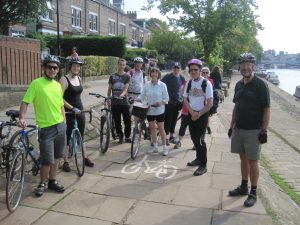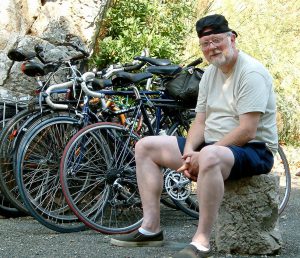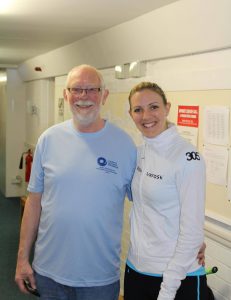I had a blood test just before going away for 2 weeks to France so didn’t get the result until I phoned yesterday. The PSA level is still 0.01 so good news. This is the 4th blood test since my radical prostatectomy, 0.02, 0.04, 0.01 and 0.01, so things are as good as they can be at the moment.
I spoke to the specialist nurse today to find out what my Gleason score was after the pathology tests on the removed prostate and surrounding tissue. It was 3+4 so a total of 7. He said only 50% in my condition would get a recurrence and only 50% of them would go on to further treatment. An article I referred to in an earlier post gives this table:
| WHAT THE NUMBERS MEAN |
| If you have a Gleason score of 5-7 |
| Your PSA increased more than two years after surgery
AND your PSA doubling time was greater than 10 months:
|
| OR your PSA doubling time was less than 10 months: Your chance of not developing metastasis in:
|
| OR your time to first PSA recurrence was less than two years:
AND your PSA doubling time was greater than 10 months:
|
| OR your PSA doubling time was less than 10 months: Your chance of not developing metastasis in:
|
I was also told that the post operation pathology on the tumours were graded at T3a. This implies a locally advanced cancer, i.e it has spread beyond the prostate capsule, but it has not spread to other organs. My seminal vesicles and a surrounding margin was removed to be on the safe side. Another paper concluded:
Survival was significantly different when comparing pT3a to pT3b groups. The 5-year overall survival (OS), cancer-specific survival (CSS), disease-progression-free survival (DPFS), and biochemical-progression-free survival (BPFS) were 96% versus 72%, 98% versus 77%, 97.3% versus 79.3%, and 60% versus 24.2%, respectively. Specimen Gleason score was the most significant predictor of OS, CSS, DPFS, and BPFS. The risk of death increased up to 3-fold when a Gleason score 8–10 was present at the final pathology. Conclusions. Radical prostatectomy may offer very good CSS, OS, DPFS, and BPFS rates in pT3a PCa. However, outcomes in patients with pT3b or specimen Gleason ≥8 were significantly worse, suggesting the need for multimodality treatment in those cases.
https://www.hindawi.com/journals/au/2012/164263/
This is also promising for me.
Exercise, not being over weight and maintaining a high level of general fitness and health, although there are no guarantees, are highly correlated with remission and higher survival rates. At the moment I am 13 stone 12 lbs, about a 10 lb heavier than when I had the operation last August. The plan now is to get back to 13 stone over the rest of this year. To this end I will be buying a smart trainer for my bike and start training and get involved in on-line racing using Zwift and a Facebook group called The Big Ring. This will involve a significant investment but but it is literally for life.




